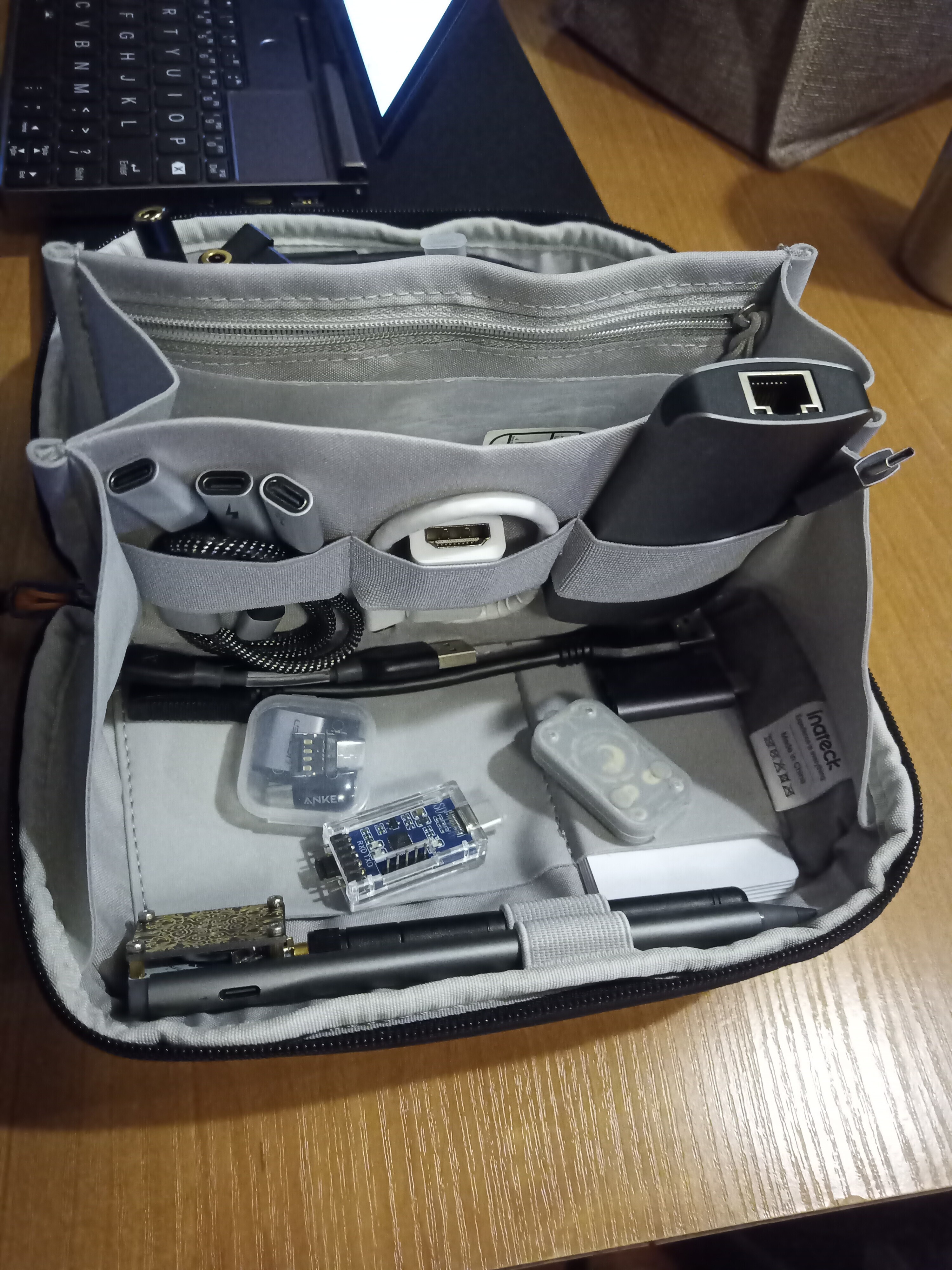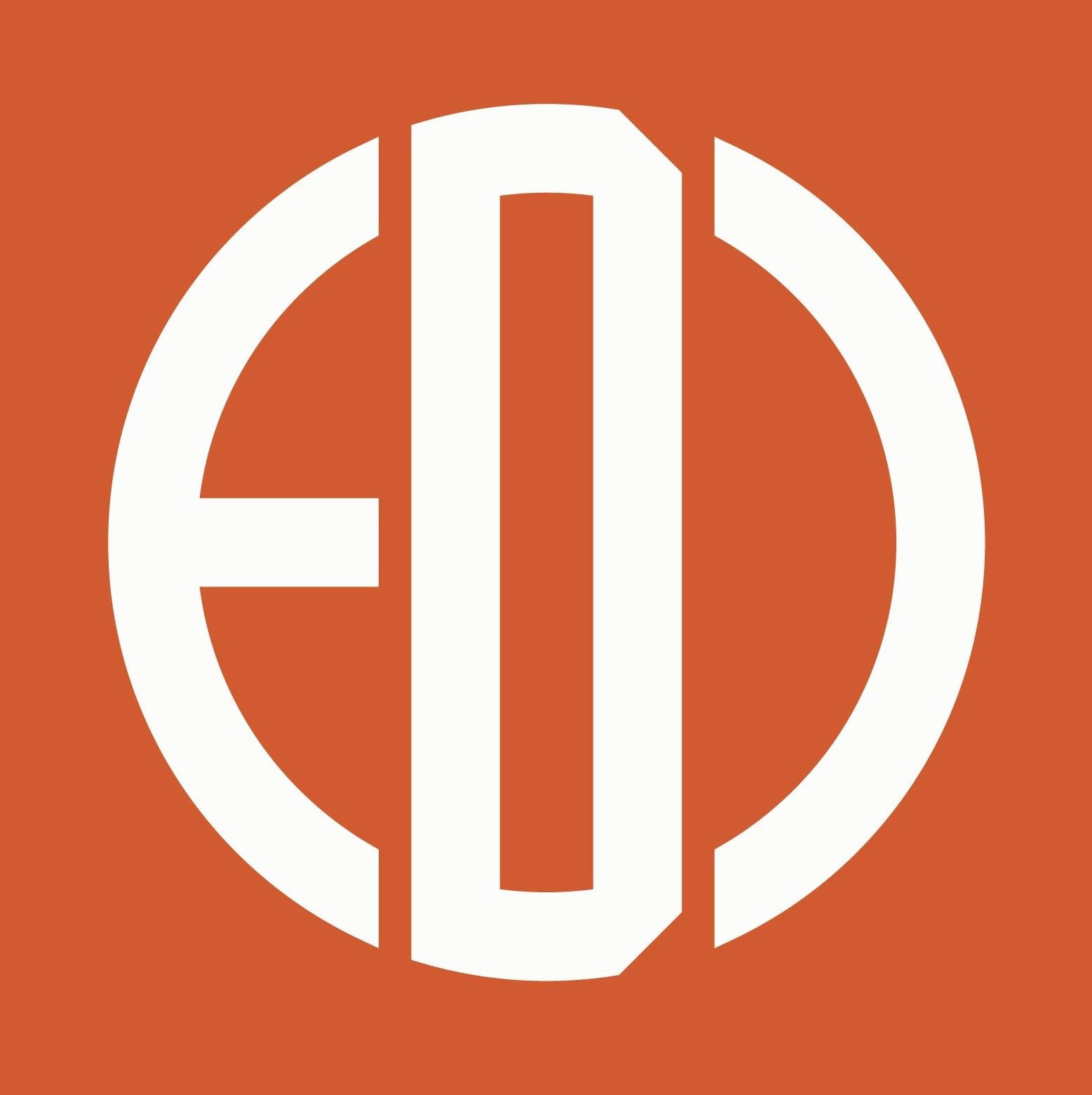I’ve finally found a bag which nicely fits almost everything I want to carry every day, and alos makes everything easily accessible - it is about the same size as what I used to carry, but now I no longer need to dump everything out to find what I neede, even with some lose parts still in there.
Contents:
Center:
- 4 empty 64 microSD with SD adapter
- one rpi 2040 with USB-A interface
- headphones
- bag of female jumper cables, with male-male adapters
- a collection of the most used NFC keyfobs
Left side:
- USB-C cable with attached USB-A adapter (USB3, missing on picture)
- two USB-C to headphone adapters
- satechi USB-C power meter
- headphone splitter
- USB-C to SATA adapter
- USB-C smartcart reader
- VGA to HDMI
- USB Ninja (USB-C)
- proxmark3 with battery/bt
- collection of NFC magic cards
Right side:
- USB-C hub with charging port
- miniDP to HDMI
- small USB-C dock
- USB-C to whatever adapters (mini, micro, B, HDMI, …)
- Chameleon ultra
- MPP pen
- Ninja USB remote
- USB-C to serial, connected via jumper cables










We’re doing pretty much everything a customer wants. Part of my stuff is for being able to get access to stuff to diagnose/repair it, part is for security consulting (or just for a quick unrelated demo as conversation starter, or to shorten discussions).
I typically carry a GDP pocket 3 with KVM module installed, running Linux.
Additionally I may carry one or several of
depending on what I expect to be doing. I also often have a boox epaper tablet for notetaking.
Those GDP pocket 3 are so cool. I don’t need one, but I really want one just to play with, and carry around with my edc.
The GDP Pocket reminds me of the old eee PCs from back in the day. Kind of like what those eee PCs were intended to be, but the tech wasn’t there yet.
I had a couple of different netbooks, including an Asus eeepc, and a MSI wind. They were a fun novelty for the time, but always felt underpowered, even when brand new. The “everything on the cloud” paradigm hadn’t arrived yet, and running applications natively was a painful experience. They really were only good for checking your emails, or editing basic text documents. They had the cheapest possible, slowest flash disks for storage, super low resolution LCD screens, and their light weight flimsy plastic contruction made them feel like a toy.
I suppose Chromebooks fill that niche now, but they are at least useful for working in cloud based workflows where everything is through the browser.
The GDP Pocket devices are the opposite. Yes technology has come a long way in the last 15 years, but the GDP devices are purposely built for professionals to do real work on, their build quality is higher, they use fast storage, fast CPU, fast RAM, have plenty of I/O ports and have a surprisingly good keyboard.